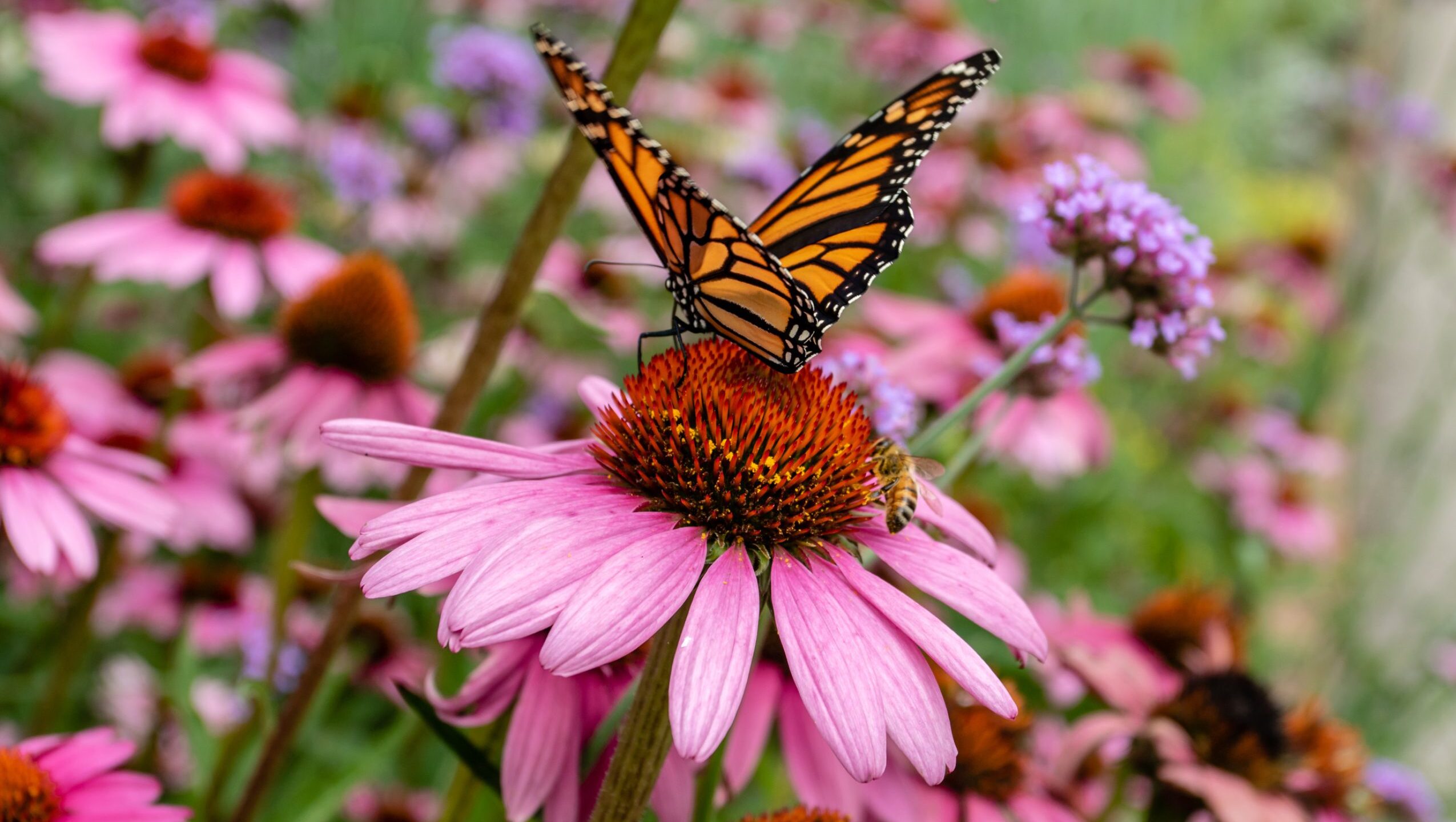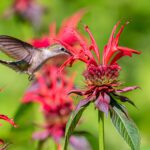
 By Cate Deane, Training & Development Manager
By Cate Deane, Training & Development Manager
Understanding the significance of pollination is crucial before delving into the realm of pollinator-friendly flora. For those of you who missed Jerry Seinfeld’s Bee Movie, let me simplify it for you. This vital process propels the creation of seeds, fruits, and the future generation of plants, thereby sustaining the production of food and oxygen that is essential for our survival. Without the intricate dance between flowers and their companions—be they insects, birds, butterflies, or bats; natural phenomena like wind or water; or other unsuspecting visitors like dogs, cats, deer, and rabbits—our plant populations would dwindle. It’s worth noting that while these creatures may grace our gardens, pollination is often a happy byproduct rather than their primary motive.
Pollinator-friendly plants are those that naturally attract and/or feed pollinator insects and animals. Characteristics like shape, color, and fragrance will attract different pollinators. Birds are drawn to scarlet, red, orange, and white flowers with a funnel or cup-like shape on sturdy stems for perch support, whereas bees prefer bright white, yellow, blue, and violet colors with shallow flowers that have more surface area for landing platform.
When considering planting to support pollinators, it is important to think about the bed space you have, the region, and what types of pollinators are in the area. It can be as simple as selecting a pollinator-friendly tree or more comprehensive like committing an entire garden to focus on pollinators. Most horticulturalists recommend building a garden with plants that vary in color, height, flower type, and blooming season. Since pollinators are vital to fruit production, you will often see backyard gardens with a row of flowers interspersed with the vegetables and fruit plants.
Here are some of my favorite pollinator-friendly plants for commercial landscapes and home gardens, alike:
 Bee Balm – This tall perennial attracts bees during the midseason blooming and can be used as a cut flower for indoor enjoyment as well. (Pictured right.)
Bee Balm – This tall perennial attracts bees during the midseason blooming and can be used as a cut flower for indoor enjoyment as well. (Pictured right.)- Butterfly Bush (large and dwarf) – Did you know there is a dwarf variety of Butterfly Bush? Not only does this hardy shrub bloom continuously through frost, it’s also drought and disease tolerant.
- Coneflower and Black-Eyed Susan – Both are hardy perennials that bloom midseason. (Purple cone flower pictured at the top of the page.)
- Lavender – Amazingly fragrant, it can be dried and used as an herb in the home and feeds the pollinators as well. It can be grown in beds or planters.
- Mint – Another herb that doubles as food for pollinators. The blooms are for the bees, and the leaves are great for so many recipes around the house.
- Sedum – Depending on the variety, it blooms at different parts of the season; but the stonecrop variety is known for being popular with pollinators and blooms in the late season/fall.
- Yarrow – A hardy perennial that likes the hot sun and blooms midseason and makes a nice cut or dried flower as well.
- Zinnia – This annual is available in a variety of colors with large abundant flowers from midseason to frost.
Host plants are another term that is often discussed in conjunction with pollinator gardening/planting. If you are trying to increase the population of a specific butterfly or moth you can plant their host plant, which is the plant that feeds the caterpillar (larva stage) of a specific butterfly. For example, milkweed is the host plant for monarch butterflies.
Understanding the importance of pollination and its role in sustaining our ecosystems is crucial. By incorporating pollinator-friendly plants into our landscapes, we can actively contribute to the well-being of pollinators and ultimately our own survival. So, let’s join forces with nature and embrace the beauty and benefits of pollinator-friendly plants in our outdoor spaces.
 Bee Balm – This tall perennial attracts bees during the midseason blooming and can be used as a cut flower for indoor enjoyment as well. (Pictured right.)
Bee Balm – This tall perennial attracts bees during the midseason blooming and can be used as a cut flower for indoor enjoyment as well. (Pictured right.)